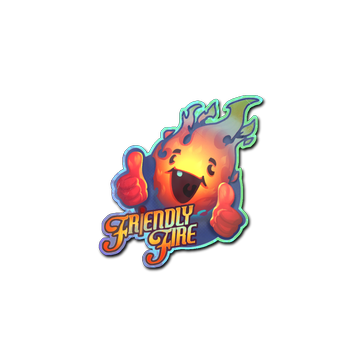Empowering Relationships: BVSM Marriage Services
Explore expert advice and support for successful marriages.
Friendly Fire: Your Teammate's Worst Nightmare in CSGO
Unleash chaos in CSGO! Discover the wildest friendly fire moments that turn teammates into nightmares and leave you laughing or crying.
Understanding Friendly Fire: The Risks and Rewards in CSGO
Friendly fire in Counter-Strike: Global Offensive (CSGO) is a gameplay mechanic that adds an extra layer of complexity to the experience. While it can serve as a tactical advantage in team-based strategies, it also presents significant risks that players must navigate. Understanding friendly fire involves recognizing how it can impact team morale and game outcomes. Accidental kills can lead to frustration among teammates and disrupt the flow of the match. Furthermore, the potential for team kills to negatively affect player rankings and personal stats adds a level of pressure that players must manage throughout their gameplay.
On the flip side, the ability to inflict friendly fire can also open up opportunities for creative tactics and coordination. Teams that effectively communicate and plan their strategies can use this mechanic to their advantage, setting traps or baiting enemies into compromising positions. Players must strike a balance between aggression and caution, ensuring that they capitalize on the benefits of friendly fire without endangering their team's success. In conclusion, understanding friendly fire in CSGO is essential for players aiming to enhance their overall performance while minimizing the risks associated with unintentional harm to teammates.

Counter-Strike is a popular tactical first-person shooter game that pits two teams against each other: the Terrorists and the Counter-Terrorists. Players can choose from a variety of weapons, including the tec 9, which is favored for its high rate of fire and accuracy in close-quarters combat. The game's strategic elements and teamwork make it a favorite among competitive players worldwide.
Top Tips to Avoid Team Kills and Improve Team Coordination
Effective communication is the cornerstone of avoiding team kills and fostering better team coordination. Establishing clear channels for feedback can help mitigate misunderstandings that lead to friendly fire incidents. Always encourage team members to voice their concerns or strategies before acting. Incorporating regular team meetings and using collaboration tools can also ensure everyone is on the same page. Here are some tips:
- Use voice chat to relay information quickly.
- Set clear roles and responsibilities for each team member.
- Implement a consistent code of conduct regarding engagement during missions.
Another key aspect is playing to your team’s strengths. Understanding each team member’s abilities can significantly reduce the chances of team kills. When planning strategies, consider the unique skills of each player and coordinate attacks that complement those talents. For example, if a player excels in support roles, ensure they're positioned to help rather than engage in unnecessary conflicts. Lastly, foster a positive team culture that emphasizes unity over individual success. Acknowledging achievements as a group can greatly enhance morale and encourage collaborative play.
How Friendly Fire Affects Gameplay: Strategies for Team Survival
Friendly fire is a critical aspect that can dramatically affect gameplay in team-based scenarios. When players inadvertently damage their own teammates, it creates an immense tactical challenge that can alter the outcome of any match. Understanding the implications of friendly fire is essential for team survival. For instance, in multiplayer shooters, a miscalculated shot can lead to not only the loss of a teammate but can also demoralize the entire team. Therefore, a clear communication strategy and awareness of your teammates’ positions are vital to minimize the risk of friendly fire incidents.
To effectively combat the issues arising from friendly fire, teams should implement several key strategies:
- Establish Clear Communication: Utilize voice chat or in-game signals to inform teammates of your actions.
- Maintain Situational Awareness: Always be aware of team positions and movements to avoid crossfire.
- Use Non-Lethal Weapons: In scenarios where friendly fire is possible, consider using weapons or abilities that do not damage teammates.